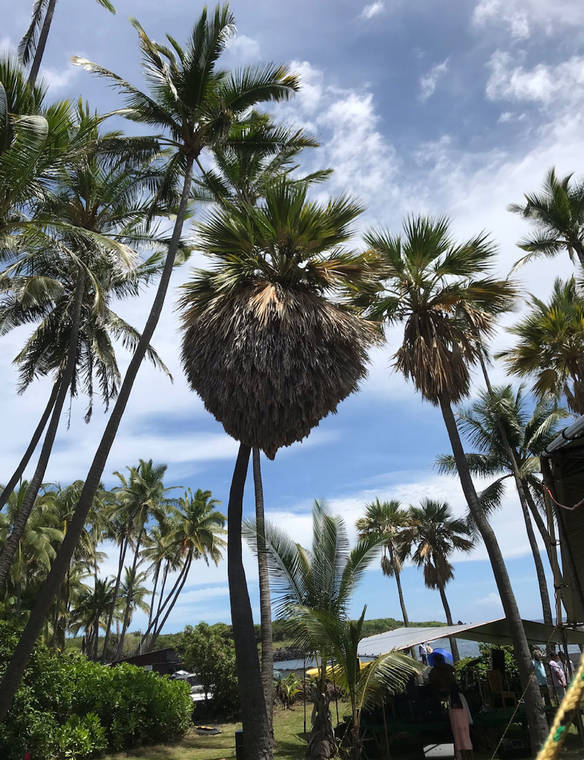If you are truly interested in conservation, then chose to protect one of our most unique plant species, the genus Pritchardia.
If you think coconut palms, kukui, bananas, taro and ti are natives and seem to grow easily, it’s time to rethink! These plants are alien, non-native species brought to Hawaii by the Polynesians as they migrated across southeast Asia and the Pacific Ocean. These are referred to as canoe plants.
For example, our state tree, the kukui, is thought to have originated in what is now Indonesia. But our state tree probably should be the loulu palm genus because it is endemic. That is, it is found only in Hawaii.
Of course there are exceptions to this. Four species are found in the South Pacific. But the Hawaiian loulus actually evolved here and are found growing naturally only in Hawaii.
At one time, there might have been many dozens of species, but with the introduction of rats and pigs, many must have perished. Later introduction of grazing animals did further damage so that now there are only remnants of what must have been vast populations of loulu.
The native Loulu group, or Pritchardia palms, are truly a vanishing species in Hawaii. Of some 28 species in the world, 24 are natives to Hawaii. The others are found in Fiji and the Tuamotu Islands.
The Kona loulu, or Pritchardia, affinis (also know as Pritchardia maideniana), grows from Puna to Kona and Ka‘u. These palms were at one time found abundantly from Kalapana along the coast to Punaluu and the Kailua area, a distance of more than 150 miles.
Today, only occasional isolated specimens can be found. Few seedlings appear around the parent plants. Without man’s help, they, too, will disappear.
Another species, Pritchardia schattaueri, also might have been common at one time in upland areas of leeward Hawaii, but was reduced to just a few trees near Honomalino when identified as a new species late in the 20th century.
Pritchardia affinis/maideniana is rarely found in the wild and only occasionally in the landscape. The most common types are the two introduced species from the South Pacific. These are Pritchardia thurstonii and Pritchardia pacifica.
The other rare one is named after George Schattauer, Kona kamaaina. A few trees are found above Kaohe, Honomalino and Hookena. This species and Pritchardia beccariana from Kulani Prison Road near Volcano are being distributed on the Big Island.
It’s important to the survival of many of these species to use them in our gardens. Unfortunately, most nurseries do not carry the native loulus, and seed of some species are difficult to obtain.
To propagate loulus, plant fresh seeds in flats or shallow boxes filled with soil. Cover the seeds with from 1/8 of an inch to 1 inch of soil, depending on the size of the seed.
Keep the soil in the flats moist but not wet. Damping off fungi are likely to ravage the tiny seedlings if the soil is kept soggy.
Seed flats can be covered with clear plastic to keep in warmth and moisture. This will speed up germination. Be sure to keep seed and seedlings protected from rats.
Germination time of palm seed varies widely with the species and requires patience.
Pot the plants into 1-gallon containers after they sprout. A suggested potting mixture is equal parts soil or cinder and rotted compost. Fertilize monthly with a complete fertilizer.
When the seedlings are 1-2 feet high, transplant them to 5-gallon containers or plant them in the ground. Loulu palms are well-suited for planting in groups, as specimens, or for lining driveways. Young palms require coddling until established, then they thrive with very little attention.

